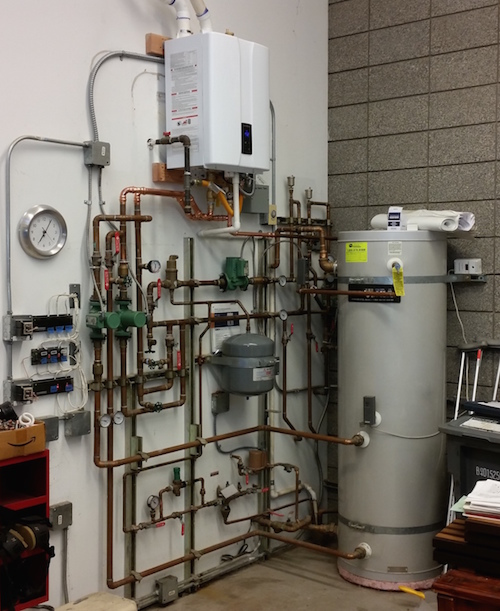Tankless water heaters are complex but they operate in a fairly simple fashion. With a tank style water heater, you are heating and then storing hot water in an insulated tank for use as needed. With Tankless, turning on a hot faucet triggers the unit to fire and start making hot water. The tankless unit is powerful enough to heat the water as it runs through what is called the Heat Exchanger. When you compare a standard 40k btu burner on a tank style water heater to the 199900 btu burner on a tankless unit, it’s easy to see how the tankless can make hot water as you use it.

One common misconception with Tankless water heaters has been created by the term “on demand”. What this means is that the water heater heats the water ON Demand, but that doesn’t mean that it arrives at your faucet instantly. Like with any water heater, the hot water has to travel through the pipes and the distance from the faucet to the water heater dictates the time it takes to get there. Eliminating or reducing wait time is possible with tankless models that have built in recirculation systems. While a recirculation system can save water and provide convenience, they do detract from the overall efficiency of the tankless unit. They also add complexity to the system, which in turn shortens the life of the unit. A customer needs to consider these points when trying to determine the best system for their home.

Washington Water Heaters, Heating and Air Contractor# WAWATWH780BO
Washington Water Heaters Contractor# WASHii*980OP
Our sister company Kodiak Heating and Cooling will handle all your home Heating and cooling needs

Contractor# KODIAHC824LH